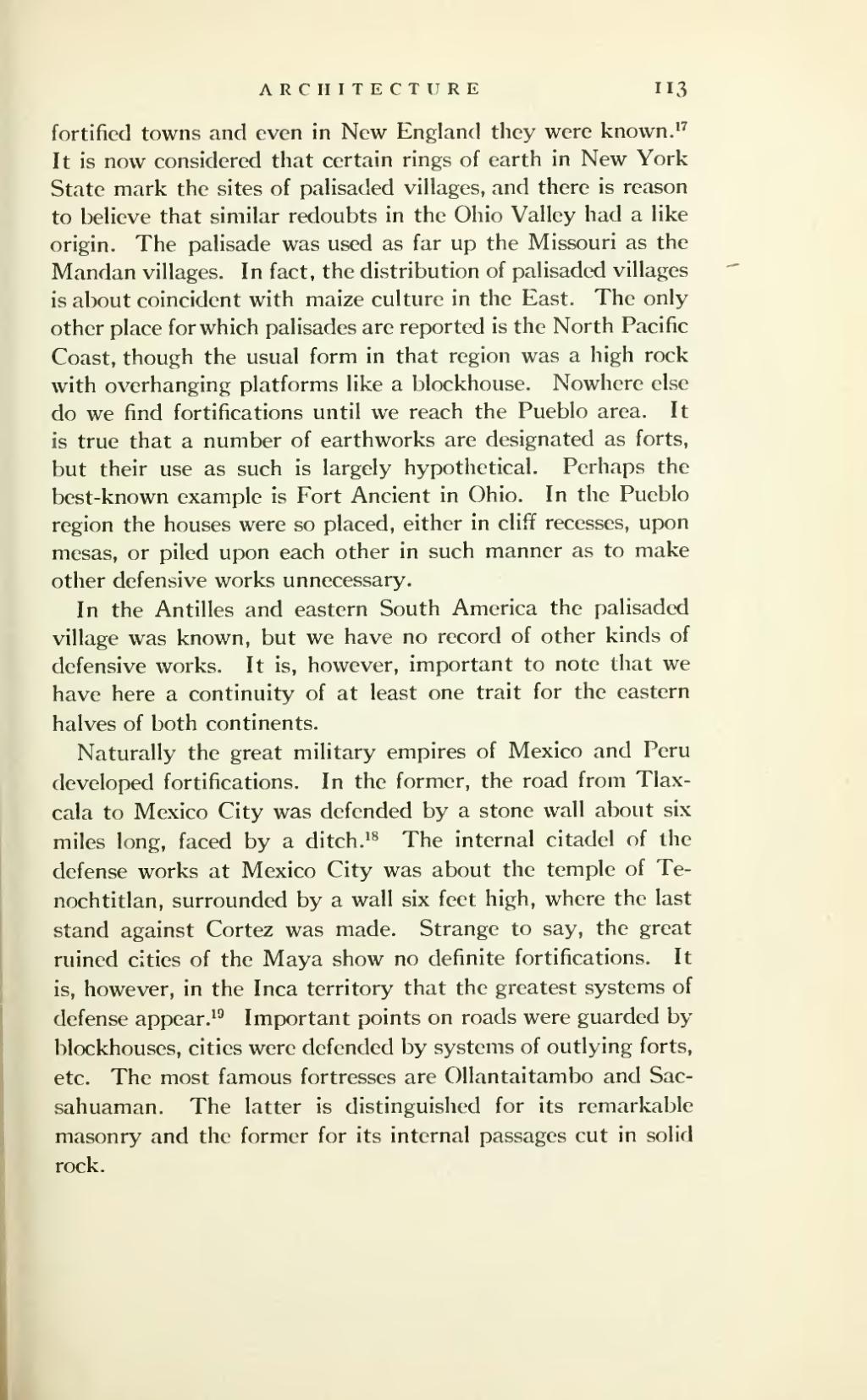fortified towns and even in New England they were known.[1] It is now considered that certain rings of earth in New York State mark the sites of palisaded villages, and there is reason to believe that similar redoubts in the Ohio Valley had a like origin. The palisade was used as far up the Missouri as the Mandan villages. In fact, the distribution of palisaded villages is about coincident with maize culture in the East. The only other place for which palisades are reported is the North Pacific Coast, though the usual form in that region was a high rock with overhanging platforms like a blockhouse. Nowhere else do we find fortifications until we reach the Pueblo area. It is true that a number of earthworks are designated as forts, but their use as such is largely hypothetical. Perhaps the best-known example is Fort Ancient in Ohio. In the Pueblo region the houses were so placed, either in cliff recesses, upon mesas, or piled upon each other in such manner as to make other defensive works unnecessary.
In the Antilles and eastern South America the palisaded village was known, but we have no record of other kinds of defensive works. It is, however, important to note that we have here a continuity of at least one trait for the eastern halves of both continents.
Naturally the great military empires of Mexico and Peru developed fortifications. In the former, the road from Tlaxcala to Mexico City was defended by a stone wall about six miles long, faced by a ditch.[2] The internal citadel of the defense works at Mexico City was about the temple of Tenochtitlan, surrounded by a wall six feet high, where the last stand against Cortez was made. Strange to say, the great ruined cities of the Maya show no definite fortifications. It is, however, in the Inca territory that the greatest systems of defense appear.[3] Important points on roads were guarded by blockhouses, cities were defended by systems of outlying forts, etc. The most famous fortresses are Ollantaitambo and Sacsahuaman. The latter is distinguished for its remarkable masonry and the former for its internal passages cut in solid rock.
